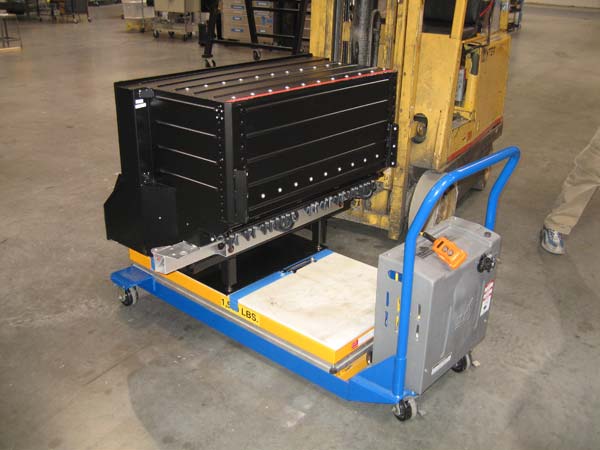Plug In America Tests Older Tesla Roadsters, Finds Battery Durability Better Than Promised
Tesla Roadster battery pack – Tesla Photo
One drawback to cars that run on batteries is that over time and multiple charge/discharge cycles, batteries will lose capacity. Individual cells start to fail to meet specifications and when enough cells go bad, it’s time for another battery pack. Since capacity is directly related to range and since battery packs are expensive to replace, how quickly batteries deteriorate is an important factor in the overall cost and practicality of EVs.
When Tesla first announced their Roadster EV in 2006, the company said that due the company’s proprietary battery management system and design of their lithium-iom battery packs, would ensure that after five years or 50,000 miles, the Roadster’s battery pack would still have 70 percent of it’s rated capacity when new, 53 kWh, enough electrons for a 244 mile range ( 2006 statement on battery age by Tesla founder Martin Eberhard here). The Tesla Roadster went on sale in 2008, which means there are now roadsters that have been on the road for as long as five years, and I’m sure many that have reached or exceeded 50,000 miles of use. It’s now possible to test Tesla’s claims regarding battery durability. A standard from the laptop industry is that lithium-ion battery packs are still serviceable above 80% capacity.
The independent EV advocacy group, Plug In America (PIA) decided to do just that and their chief science officer, Tom Saxton has reported the results of an owner-reported survey of Tesla battery packs, based on a sample size of 4% of all 2,500 Roadsters made. Plug In America discovered that the Tesla battery packs are performing much better than advertised. After 100,000 miles, double the advertised 70% capacity life, the battery packs have an average capacity of 80-85%.
PIA also tested for climate differences because PIA’s earlier first ever survey of EV battery life involving owners of Nissan Leafs showed measurable declines in battery capacity in hot climates. The Leaf has a much simpler battery heat management system than used by Tesla. A surveys of first generation Toyota RAV4 EV owners, which was on sale from 1997 to 2003, in order to measure performance in batteries at least 10 years old, is also underway, as is a survey of Tesla Model S owners but it’s too early for any real meaningful data to be obtained on that car.
More by TTAC Staff
Latest Car Reviews
Read moreLatest Product Reviews
Read moreRecent Comments
- Analoggrotto I hope the walls of Mary Barra's office are covered in crushed velvet.
- Mikey For 36.4 years i punched the clock at GM Canada.. For the last 15.5 years (frozen at 2008 rates) my GM pension shows up in my account. I flirted with Fords for a couple of years but these days I'm back to GM vehicles and still qualify for employee price. Speaking as a High School drop out ..GM provided myself and family a middle class lifestyle.. And still does .. Sorry if i don't join in to the ever present TTAC ..GM Bash fest
- Akear Does anyone care how the world's sixth largest carmaker conducts business. Just a quarter century ago GM was the world's top carmaker. [list=1][*]Toyota Group: Sold 10.8 million vehicles, with a growth rate of 4.6%.[/*][*]Volkswagen Group: Achieved 8.8 million sales, growing sharply in America (+16.6%) and Europe (+20.3%).[/*][*]Hyundai-Kia: Reported 7.1 million sales, with surges in America (+7.9%) and Asia (+6.3%).[/*][*]Renault Nissan Alliance: Accumulated 6.9 million sales, balancing struggles in Asia and Africa with growth in the Americas and Europe.[/*][*]Stellantis: Maintained the fifth position with 6.5 million sales, despite substantial losses in Asia.[/*][*]General Motors, Honda Motor, and Ford followed closely with 6.2 million, 4.1 million, and 3.9 million sales, respectively.[/*][/list=1]
- THX1136 A Mr. J. Sangburg, professional manicurist, rust repairer and 3 times survivor is hoping to get in on the bottom level of this magnificent property. He has designs to open a tea shop and used auto parts store in the facility as soon as there is affordable space available. He has stated, for the record, "You ain't seen anything yet and you probably won't." Always one for understatement, Mr. Sangburg hasn't been forthcoming with any more information at this time. You can follow the any further developments @GotItFiguredOut.net.
- TheEndlessEnigma And yet government continues to grow....


































Comments
Join the conversation
Honda has a great lease deal on their Fit EV so if you are self-limiting to a 35 miles radius, then this is the EV you you! You don't have to own an expensive battery pack and they install a home charger for free.
The ICE has been built and refined in large numbers for over 100 years. The BEV only has about 10 years of reasonably small production. Tesla model S with 250+ miles of range certainly makes a great day car. Most people could live with it. There are already battery advances on the horizon that will increase capacity, decrease cost and increase durability. With a battery that had a 500 mile range, lower cost and 10,000 cycle life - the ICE will look like expensive old technology.